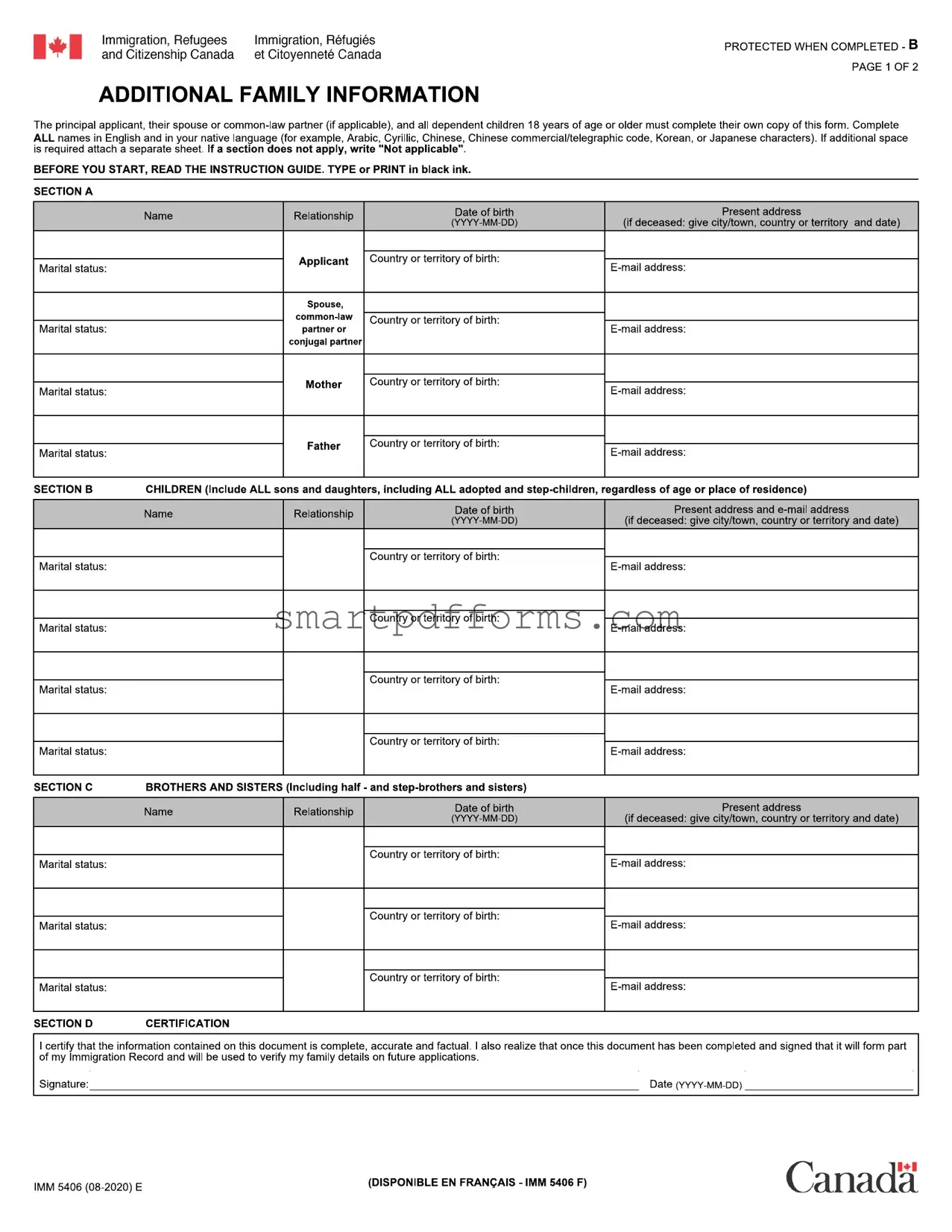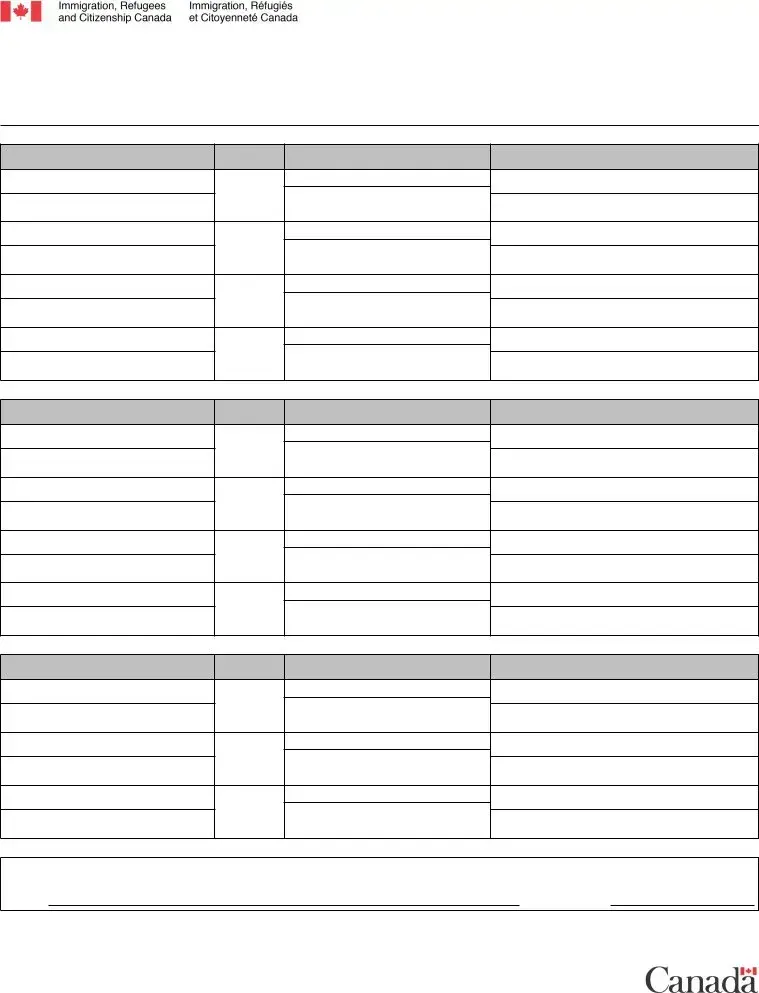When embarking on the journey of immigration, filling out various forms becomes a necessary step to ensure that all details are accurately provided to immigration authorities. Among these, the IMM 5406E form, also known as the Additional Family Information form, plays a pivotal role in the assessment process by Immigration, Refugees and Citizenship Canada (IRCC). This particular form requires all principal applicants, along with their spouse or common-law partner (if applicable), and all dependent children who are 18 years of age or older, to furnish comprehensive details about their family. It mandates the provision of information in both English and the applicant's native language, ensuring a thorough understanding of the applicant's family background. The form covers various sections, including detailed information regarding the applicant, their spouse or common-law partner, children (regardless of their age or residence), and siblings, inclusive of half- and step-siblings. Additionally, it emphasizes the importance of authenticity and completeness of the provided information, which becomes an integral part of the applicant’s immigration record. The IMM 5406E form not only serves as a tool for vetting applicants' family ties but also aids in future applications by providing a basis for verifying family details. The underpinning legal framework for this form stems from the Immigration and Refugee Protection Act (IRPA), highlighting the comprehensive approach of Canadian immigration authorities towards ensuring the integrity and accuracy of an applicant's familial information, while also safeguarding the rights to privacy and data protection under the Privacy Act. Consequently, the proper completion of this form is crucial for the smooth processing of an immigration application, reminiscent of the detailed procedures in place to ensure fair and thorough evaluation within Canada’s immigration system.


